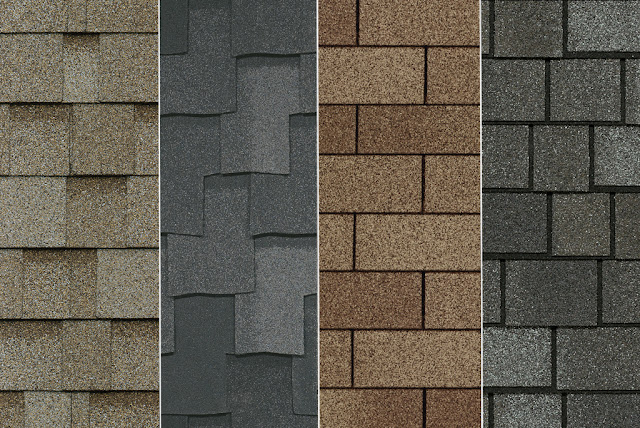All shingles were organic at first with the base material, called felt, being primarily cotton rag until the 1920s when cotton rag became more expensive and alternative materials were used.
Other organic materials used as the felt included wool, jute or manila, and wood pulp. In 1926 the Asphalt Shingle and Research Institute with the National Bureau of Standards tested 22 types of experimental felts and found no significant differences in performance.
>> Related Post: How To Compare The Best Residential Roof Systems?
In the 1950s self-sealing and manually applied adhesives began to be used to help prevent wind damage to shingle roofs. The design standard was for the self-sealing strips of adhesive to be fully adhered after sixteen hours at 140 °F (60 °C).
Also in the 1950s testing on the use of 3⁄4-inch (19 mm) staples rather than roofing nails was carried out showing they could perform as well as nails but with six staples compared with four nails.
In 1960 fiberglass mat bases were introduced with limited success; the lighter, more flexible fiberglass shingles proved to be more susceptible to wind damage particularly at freezing temperatures.
Later generations of shingles constructed using fiberglass in place of asbestos provided acceptable durability and fireproofing.
Also in the 1960s research into hail damage which was found to occur when hail reach a size larger than 1.5 inches (38 mm).
>> Related Post: The 5 Building Construction Types You Need To Know.
Asphalt Roofing Manufacturers Association (ARMA) formed the High Wind Task Force in 1990 to continue research to improve shingle wind resistance.
In 1996, a partnership between members of the U.S. property insurance industry, the Institute of Business and Home Safety, and the Underwriter's Laboratory (UL) was established to create an impact resistance classification system for roofing materials.
The system, known as UL 2218, established a national standard for impact resistance. Subsequently, insurers offered discounted premiums for policies on structures using shingles that carried the highest impact classification (class 4).
In 1998, Texas Insurance Commissioner Elton Bomer mandated that Texas provide premium discounts to policyholders that installed class 4 roofs.
Gradually and through the advancement, fiberglass is being introduced into the asphalt shingles.
The fiberglass shingles went through different experiments wherein they became more fragile and susceptible to breakage.
>> Related Post: What are the Varieties of Roofing Services That Are Available?
But through time, fiberglass has overcome these problems and is now much used for the bases of the asphalt shingles.
Fiberglass shingles are used to replace organic materials which means it is much more fire-resistant compared to organic asphalt shingles.
Because it has lesser asphalt content, these fiberglass shingles are lesser in weight which means it is much easier to install and less costly.
It is also more moisture-resistant because of its fiberglass layer, resulting in less warping. It also costs less compared with organic asphalt shingles.
Because it has lesser content of asphalt, it is less durable or isn’t as durable compared with the organic asphalt shingles.
And because it is much thinner, during the colder temperature, it can be more brittle and are prone to breakage compared with the organic shingles which are why it is not advisable in areas with colder climate temperature.
>> Related Post: When should you choose roof replacement?
Shingles made from asphalt, whether organic or fiberglass, are still more inexpensive compared to other shingle materials.
The cost of the asphalt shingles greatly depends on the brand and how these are being improved. Overall, the material used for asphalt shingles depends on your preference and your budget.
To discuss your asphalt shingles-related topic, check with your local roofing contractor or specialist to assist you to have a better roof for your home.
Conclusion
Swadley Roof Systems offers the best roofing services in the Houston, Austin, San Antonio and Dallas area.
- Tel: 832-559-8463
- Email: info@swadleyroofsystems.com
- Location: 17413 FM 2920 Suite O Tomball, TX 77377
- Facebook: Fanpage Swadley Roof Systems
- Website: https://www.swadleyroofsystems.com/







0 Comments
Đăng nhận xét